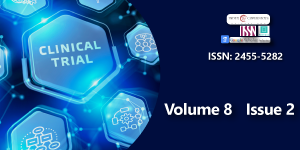Acute Flaccid Paralysis surveillance in Gaza Strip, Palestine
Main Article Content
Abstract
Acute Flaccid Paralysis (AFP) is a clinical syndrome characterized by rapid onset of weakness, in the respiratory muscles, swallowing and limbs; and death because of respiratory muscles failure.
AFP surveillance is crucial, the clinicians are required to notify AFP cases among children below 15 years old to the epidemiology department with completion of AFP surveillance form.
In this study, the researcher analyzed AFP surveillance investigation forms to determine the clinical picture, viral etiology and the incidence of AFP among children under 15 years.
Material and method (Study design): The research study conducted through cross sectional study, based on AFP investigation forms in the epidemiology department.
Results: The final diagnosis of the cases were as follow, 71.1% “27 cases” were GBS, 10.5 % were Encephalitis, 7.9% were Neuropathy, 2.6% “ one case only” for each of the following Aseptic meningitis, Transverse myelitis, Tuphus fever and Subspinal muscular atrophy.
The incidence rate among children less than 15 years old which range from 0.58 / 100.000 in 2006 to 1.2 / 100.000 in 2012; Most of the cases 89.5 % had fully vaccinated and 10.5% had not fully vaccinated due to their ages less than one year, 65.8 “25 cases” had residual weakness, all of the cases classified as discarded according to the expert committee decision; no one case dead, all of the samples sent to the Tal-Hashomir laboratory in the occupied land in 1948 for viral isolation; most of the results 81.6% revealed that no virus isolated, 11.8% isolated ECHO virus, 2.6% isolated Coxsachie virus and 4 % isolated NPEV.
Conclusion: No wild polio virus in Palestine which is polio free since 1984 and certified in 2006, our success being attributed to: start of 2 doses of IPV and 5 doses of OPV since 1978, high immunization coverage more than 95% at district level and effective AFP surveillance system in Palestine. The study recommended to encourage polio immunization and all clinicians are required to report all AFP cases and submitting at least two stool samples to the epidemiology department (at least 24 hours apart within 14 days of onset of paralysis).
Downloads
Article Details
Copyright (c) 2021 Abu Ali KA.

This work is licensed under a Creative Commons Attribution 4.0 International License.
Licensing and protecting the author rights is the central aim and core of the publishing business. Peertechz dedicates itself in making it easier for people to share and build upon the work of others while maintaining consistency with the rules of copyright. Peertechz licensing terms are formulated to facilitate reuse of the manuscripts published in journals to take maximum advantage of Open Access publication and for the purpose of disseminating knowledge.
We support 'libre' open access, which defines Open Access in true terms as free of charge online access along with usage rights. The usage rights are granted through the use of specific Creative Commons license.
Peertechz accomplice with- [CC BY 4.0]
Explanation
'CC' stands for Creative Commons license. 'BY' symbolizes that users have provided attribution to the creator that the published manuscripts can be used or shared. This license allows for redistribution, commercial and non-commercial, as long as it is passed along unchanged and in whole, with credit to the author.
Please take in notification that Creative Commons user licenses are non-revocable. We recommend authors to check if their funding body requires a specific license.
With this license, the authors are allowed that after publishing with Peertechz, they can share their research by posting a free draft copy of their article to any repository or website.
'CC BY' license observance:
|
License Name |
Permission to read and download |
Permission to display in a repository |
Permission to translate |
Commercial uses of manuscript |
|
CC BY 4.0 |
Yes |
Yes |
Yes |
Yes |
The authors please note that Creative Commons license is focused on making creative works available for discovery and reuse. Creative Commons licenses provide an alternative to standard copyrights, allowing authors to specify ways that their works can be used without having to grant permission for each individual request. Others who want to reserve all of their rights under copyright law should not use CC licenses.
World Health Organization (1988) World Health Assembly. Global eradication of poliomyelitis by the year 2000 (WHA resolution no. WHA 41.28). Geneva; World Health Organization. Link: https://bit.ly/2Vwnhjy
Marx A, Glass JD, Sutter RW (2000) Differential diagnosis of acute flaccid paralysis and its role in poliomyelitis surveillance. Epidemiol Rev 22: 298-316. Link: https://bit.ly/3irE9Rt
Hussain IHMI, Ali S, Sinniah M, Kurup D, Khoo TB, et al. (2004) Five year surveillance of acute flaccid paralysis in Malaysia. J Ped Child Health40: 127-130. Link: https://bit.ly/3iu2SF0
Duhair M, Abu Ali K (2011) National Guideline for Communicable Diseases Surveillance. 1ST edition, Palestine.
MOH (2006) Palestinian Ministry of Health, Health Annual Report. 2006, Gaza Strip. Link: https://bit.ly/3lywMty
MOH (2007) Palestinian Ministry of Health, Health Annual Report. 2007, Gaza Strip. Link: https://bit.ly/3lxVgTL
MOH (2008) Palestinian Ministry of Health, Health Annual Report. 2008, Gaza Strip. Link: https://bit.ly/3lzlPrx
MOH (2009) Palestinian Ministry of Health, Health Annual Report. 2009, Gaza Strip. Link: https://bit.ly/3Cn62C3
MOH (2010) Palestinian Ministry of Health, Health Annual Report. 2010, Gaza Strip. Link: https://bit.ly/3AhrWFi
MOH (2011) Annual Epidemiology Report. 2011, Gaza Strip. Link: https://bit.ly/37l3LcB
Saraswathy TS, Zahrin HN, Apandi MY, Kurup D, Rohani J, et al. (2008) Acute Flaccid Paralysis Surveillance: Looking Beyond The Global Poliomyelitis Eradication Initiatives. Southeast Asian J Trop Med Public Health 39: 1033-1039 Link: https://bit.ly/37lyJkI
Solomon T, Wilson H (2003) Infectious causes of acute flaccid paralysis. Curr Opin Infect Dis16: 375-381. Link: https://bit.ly/3fxhXnh
World Health Organization (2008) Global Polio Eradication Initiative Report. Geneva: World health Organization. Link: https://bit.ly/3lDq6ua

